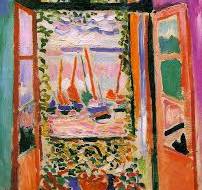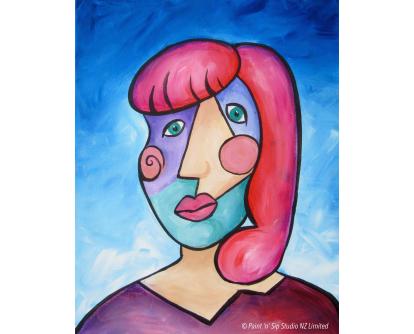The Timeless Beauty of Matisse Paintings
Henri Matisse, a French artist known for his revolutionary approach to color and form, created some of the most iconic and influential paintings of the 20th century. His bold use of color, expressive brushwork, and innovative compositions have left a lasting impact on the world of art.
Matisse’s paintings are characterized by their vibrant hues, fluid lines, and dynamic compositions. He often depicted scenes from everyday life, interiors, landscapes, and figures in a style that was both modern and timeless. His work reflects a sense of joy, harmony, and beauty that transcends time and cultural boundaries.
One of Matisse’s most famous works is “The Dance,” a series of paintings that capture the essence of movement and rhythm through simplified forms and rhythmic patterns. The figures in the painting seem to flow effortlessly across the canvas, conveying a sense of energy and vitality.
Another notable painting by Matisse is “Woman with a Hat,” which showcases his mastery of color and expression. The bold use of complementary colors and thick brushstrokes create a sense of dynamism and emotion that is characteristic of Matisse’s style.
Throughout his career, Matisse continued to push the boundaries of traditional art forms, experimenting with new techniques and materials to create innovative works that challenged conventions. His legacy as a pioneer of modern art continues to inspire artists and art lovers around the world.
Whether you are drawn to his vibrant colors, expressive forms, or bold compositions, there is no denying the timeless beauty and enduring appeal of Matisse’s paintings. Explore his work and immerse yourself in the world of one of the greatest artists of the 20th century.
Exploring Matisse: 8 Tips on His Bold Colors, Simplified Forms, and Lasting Influence
- Matisse was known for his bold use of color in his paintings.
- He often used simplified forms and shapes in his artworks.
- Matisse’s paintings are characterized by a sense of harmony and balance.
- He was a key figure in the Fauvism art movement.
- Matisse’s work often features themes of joy, pleasure, and the beauty of everyday life.
- He experimented with various techniques such as cut-outs later in his career.
- His artwork reflects a sense of spontaneity and freedom.
- Matisse’s influence can be seen in modern art and design.
Matisse was known for his bold use of color in his paintings.
Matisse, renowned for his innovative approach to art, was celebrated for his fearless exploration of color in his paintings. His bold use of vibrant hues not only revolutionized the way color was perceived in art but also infused his works with a sense of vitality and energy that captivated viewers. Matisse’s mastery of color allowed him to convey emotions, movement, and atmosphere in a way that was truly groundbreaking, solidifying his reputation as a pioneer of modern art.
He often used simplified forms and shapes in his artworks.
Henri Matisse, renowned for his innovative approach to art, frequently employed simplified forms and shapes in his paintings. By reducing complex subjects into basic elements, he was able to convey profound emotions and ideas with remarkable clarity. Matisse’s use of simplified forms not only added a sense of harmony and balance to his compositions but also allowed viewers to engage more deeply with the essence of his art. This deliberate choice in his artistic style showcases Matisse’s mastery in distilling the essence of his subjects while maintaining a sense of beauty and sophistication in his work.
Matisse’s paintings are characterized by a sense of harmony and balance.
Matisse’s paintings are renowned for their distinctive portrayal of a sense of harmony and balance. Through his masterful use of color, form, and composition, Matisse achieved a remarkable equilibrium in his artworks. The way he harmoniously combined vibrant hues and fluid lines created a visual symphony that captivates the viewer’s eye. This innate ability to balance elements within his paintings not only reflects Matisse’s artistic skill but also evokes a profound sense of tranquility and unity in his work.
He was a key figure in the Fauvism art movement.
Henri Matisse played a pivotal role as a key figure in the Fauvism art movement, known for its bold use of color and innovative approach to painting. Alongside other prominent artists like André Derain and Maurice de Vlaminck, Matisse challenged traditional artistic norms by emphasizing vibrant hues and expressive brushwork in his works. The Fauvist movement, with Matisse at its forefront, revolutionized the art world by prioritizing emotional expression and subjective interpretation over realistic representation. Matisse’s contributions to Fauvism continue to influence modern art and inspire artists to explore new possibilities in color and form.
Matisse’s work often features themes of joy, pleasure, and the beauty of everyday life.
Henri Matisse’s artistic creations frequently center around themes of joy, pleasure, and the beauty found in ordinary moments of daily existence. Through his paintings, Matisse captures the essence of happiness and contentment, celebrating the simple yet profound experiences that make life meaningful. His vibrant use of color and fluid forms infuse his work with a sense of vitality and optimism, inviting viewers to appreciate the beauty that surrounds them in their everyday lives.
He experimented with various techniques such as cut-outs later in his career.
Towards the later years of his career, Henri Matisse delved into experimentation with innovative techniques, notably exploring the realm of cut-outs. This artistic exploration marked a significant shift in his creative process, allowing him to redefine traditional notions of composition and form. Through his cut-out works, Matisse demonstrated a mastery of shape and color, creating dynamic pieces that exuded a sense of playfulness and freedom. His foray into this new artistic territory showcased his unwavering commitment to pushing boundaries and reinventing his artistic practice, leaving a lasting impact on the world of art.
His artwork reflects a sense of spontaneity and freedom.
Henri Matisse’s artwork is imbued with a sense of spontaneity and freedom that sets it apart from the traditional art of his time. His bold use of color and dynamic compositions evoke a feeling of unrestrained creativity, as if each brushstroke was made in the moment without hesitation. This spontaneity in his work gives his paintings a sense of energy and vitality, inviting viewers to experience the joy and liberation that Matisse felt while creating them.
Matisse’s influence can be seen in modern art and design.
Matisse’s influence resonates strongly in modern art and design, shaping the creative landscape with his revolutionary approach to color, form, and composition. Artists and designers draw inspiration from Matisse’s bold use of vibrant hues, fluid lines, and innovative techniques to infuse their work with a sense of dynamism and vitality. His legacy transcends time, continuing to impact contemporary art movements and design trends, showcasing the enduring relevance and timeless appeal of Matisse’s artistic vision in today’s creative endeavors.





